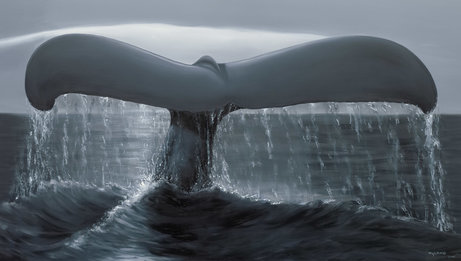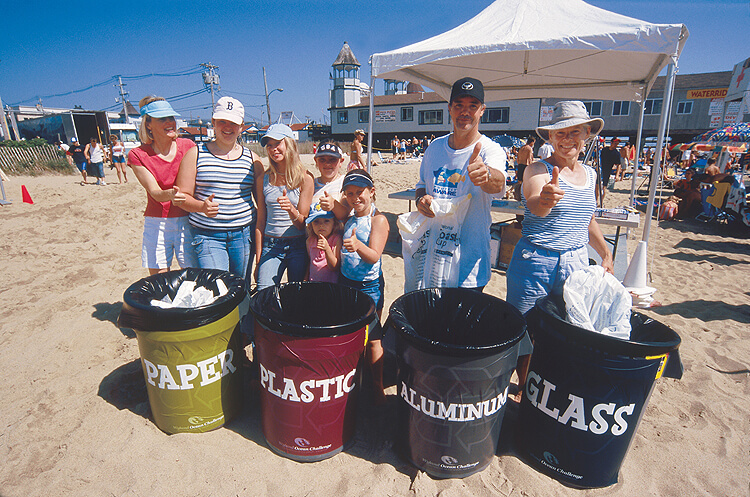Students making a difference
Lalipur, Nepal
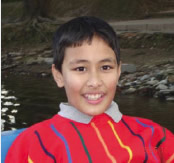 Most kids around the world have to go to a zoo to see Bengal tigers, one-horned rhinos, Asian elephants, and leopards. But for Prasanna Bista, who lives in Nepal, it is a short drive to the Royal Chitwan National Park for a visit with these incredible animals. Chitwan, which means “in the heart of the jungle,” is home to some of the most endangered wildlife on the planet. “There are many interesting animals,””Prasanna says, “especially crocodiles.” The marshy floodplains from the Narayani, Rapti, and Reu Rivers make Chitwan the ideal home for them.
Most kids around the world have to go to a zoo to see Bengal tigers, one-horned rhinos, Asian elephants, and leopards. But for Prasanna Bista, who lives in Nepal, it is a short drive to the Royal Chitwan National Park for a visit with these incredible animals. Chitwan, which means “in the heart of the jungle,” is home to some of the most endangered wildlife on the planet. “There are many interesting animals,””Prasanna says, “especially crocodiles.” The marshy floodplains from the Narayani, Rapti, and Reu Rivers make Chitwan the ideal home for them.
But with the increase in the region’s population and the building of houses, the rivers that feed into this endangered area are becoming polluted. This has caused the extinction of the freshwater Ganges River dolphin in the Narayani River and has decreased populations in other rivers. To help reduce pollution, Prasanna encourages people not to litter plastic bags that contaminate the rivers. He also works to plant trees along the river’s banks to hold the soil so it will not fall loose and go into the water. As Prasanna says, “Save the environment and it will save you.”
Dana Point, California
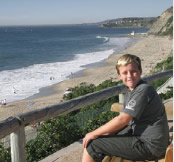 Dana Point, California, draws visitors from around the globe to its spectacular surfing beaches. Yet with these masses of beach-goers come hotels and resorts.
Dana Point, California, draws visitors from around the globe to its spectacular surfing beaches. Yet with these masses of beach-goers come hotels and resorts.
Clayton Dunlap, 12, has lived within walking distance of the Dana Point shoreline his entire life. To Clayton, the local beach is a place to swim, boogie board, body surf, and spend time with friends and family. Yet within his lifetime, Clayton has witnessed the rapid development of his seaside home. “They are building up so much of the empty space in the area,” Clayton notes. “I wish it would stay like it is today but it probably won’t. The headlands above Strands, the local beach by my house, are being turned into a hotel. The beach will become even more crowded with tourists than it already is. Pretty soon, surfers won’t even be able to find space to surf.”
But Clayton and his friends do what they can to help preserve Dana Point’s coast. “Even the little things like recycling and picking up trash that you pass by on the beach help,” Clayton says.
Shelter Island, Alaska
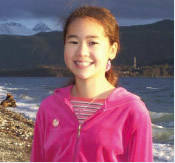 Growing up in an Alaskan Fishing Lodge has its perks. Megan Murayama’s home on Shelter Island, a 30-minute boat ride from the Alaska capital city of Juneau, is located of one of the world’s best fishing grounds. The island is also home to deer, mink, otters, and birds – there is even an eagle’s nest right outside the lodge.
Growing up in an Alaskan Fishing Lodge has its perks. Megan Murayama’s home on Shelter Island, a 30-minute boat ride from the Alaska capital city of Juneau, is located of one of the world’s best fishing grounds. The island is also home to deer, mink, otters, and birds – there is even an eagle’s nest right outside the lodge.
With its abundant wildlife, Shelter Island is a great place for someone like Megan, 12, who loves the outdoors. Megan spends the summer months fishing, exploring the local tide pools, and bird watching. Because the island is so remote, she is taught at home by her mother. This gives Megan the opportunity to learn about the amazing environment right in her own backyard.
Megan believes that by learning about the local wildlife, people will have a greater respect for the animals. She is happy to share her knowledge and love of these animals with the many visitors of Shelter Island. In order to help preserve the nature around her, Megan and others at Anchor Point Lodge help clean up litter on the beaches and encourage their guests to recycle. “If everyone did just a little to help protect the environment, it would make a big difference,” Megan says.
Syracuse, New York
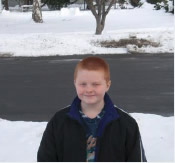 Dylan Gwilt, 10, loves the varied seasons of his hometown of Syracuse, New York. He and his friends sled down rolling hills in winter, and in summer they swim in nearby lakes. With all of the outdoor fun and activity, it hardly seems that Syracuse is affected by pollution like its neighbor, New York City. But Dylan recently realized that smaller towns like Syracuse have environmental issues too.
Dylan Gwilt, 10, loves the varied seasons of his hometown of Syracuse, New York. He and his friends sled down rolling hills in winter, and in summer they swim in nearby lakes. With all of the outdoor fun and activity, it hardly seems that Syracuse is affected by pollution like its neighbor, New York City. But Dylan recently realized that smaller towns like Syracuse have environmental issues too.
Smog and dirty water may not be as noticeable as in the big city, but litter and polluted lakes are still a problem. “There are many great lakes to swim in,” Dylan says. “But if we keep throwing garbage in them, we won’t be able to anymore.” To help, Dylan and his family and friends have “clean-up days” when they pick up trash that has been carelessly littered. Dylan recommends that kids form clubs to get others involved in doing their part for the planet. “With a bunch of kids picking up garbage and recycling all of the cans and bottles, we can make a difference.”
Curitiba, Brazil
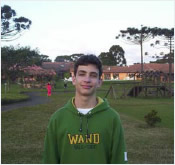 Many people have labeled Curitiba, Brazil as one of the most people friendly cities in the world. With thousands of acres of parks, a state-of-the-art bus system, 90 miles of bike paths, streets made only for pedestrians, and innovative recycling centers and garbage systems, it may just be true.
Many people have labeled Curitiba, Brazil as one of the most people friendly cities in the world. With thousands of acres of parks, a state-of-the-art bus system, 90 miles of bike paths, streets made only for pedestrians, and innovative recycling centers and garbage systems, it may just be true.
Living in a city as environmentally friendly as Curitiba makes it easy for students like Eduardo Iahn Bentes to look for ways to keep our planet healthy. At 15 years old, Eduardo has grown up respecting Earth and its resources. Just like most teenagers, Eduardo spends his time hanging out with his friends and family, skating and having fun. But with the philosophy, “to preserve nature is to preserve life,” he makes every effort to keep the planet green. He bikes instead of going places by car, recycles everything he can, throws trash in the correct bin, and is careful not to waste water. He believes it takes simple steps to preserve the atmosphere and keep the forests green.
New Delhi, India
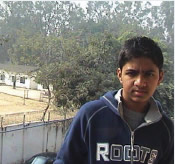 New Delhi is full of ancient traditions and monuments. But for Harshit Agrawal, the capital city of India holds the key to his country’s environmental future. As a founding member of “Little Eco Friends,” Harshit is working with his friends and family to improve the environment in India and around the planet. From performing street plays and organizing marches to hanging posters and forming human chains, Harshit encourages others to get involved in making change happen.
New Delhi is full of ancient traditions and monuments. But for Harshit Agrawal, the capital city of India holds the key to his country’s environmental future. As a founding member of “Little Eco Friends,” Harshit is working with his friends and family to improve the environment in India and around the planet. From performing street plays and organizing marches to hanging posters and forming human chains, Harshit encourages others to get involved in making change happen.
He has organized successful campaigns for the conservation of safe water and against plastic bags. His current project, “Don’t Waste Waste,” is raising awareness about how useful waste can be. Harshit is also busy attending environmental conferences all over the globe spreading his message, vowing to “help Mother Earth become cleaner and greener.”
Manuel Antonio, Costa Rica
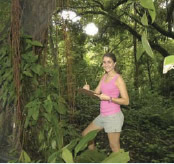 Janine Licare moved to Costa Rica when she was four. By age nine, she began saving its rainforests. “It is beautiful here,” Janine says. “There are sloths, monkeys, snakes, iguanas, and funny looking animals called bisote that look like raccoons. There are rainforests everywhere – and I want to keep it that way.”
Janine Licare moved to Costa Rica when she was four. By age nine, she began saving its rainforests. “It is beautiful here,” Janine says. “There are sloths, monkeys, snakes, iguanas, and funny looking animals called bisote that look like raccoons. There are rainforests everywhere – and I want to keep it that way.”
She started her mission to save the Costa Rican rainforests by selling painted rocks at a roadside table with a friend and raised enough money to form Kids Saving the Rainforest, a non-profit organization dedicated to preserving the rainforest and its animal inhabitants.
Seven years later, Janine and Kids Saving the Planet have raised enough money to buy four acres of local rainforest, build an educational center, plant more than 4,000 trees, operate weekend environmental camps for kids, and help save Titi monkeys, a tiny species found only in South America. Many of these critically endangered animals die each year by using power lines to cross highways. Janine protects them by placing blue rope bridges across roads in the Manuel Antonio National Park that the monkeys can use instead. “Kids are the future,” Janine says. “We are the generation that will have to make a difference. Everything is depending on us.”
Lima, Peru
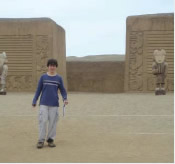 From the Andes Mountains and the jungles of the Amazon to its coastal desert, Peru is a country that combines some of the Earth’s most interesting habitats. In Lima, the capital of Peru, where Lucas Ghersi lives and goes to school, the climate is dry and arid. But the city flows with cultural diversity. “The population has quadrupled in the last twenty-five years,” Lucas explains. “People come to Lima from all over the world creating a mixture of cultures.”
From the Andes Mountains and the jungles of the Amazon to its coastal desert, Peru is a country that combines some of the Earth’s most interesting habitats. In Lima, the capital of Peru, where Lucas Ghersi lives and goes to school, the climate is dry and arid. But the city flows with cultural diversity. “The population has quadrupled in the last twenty-five years,” Lucas explains. “People come to Lima from all over the world creating a mixture of cultures.”
While many people are concerned about the growing population, Lucas views it as an opportunity to experience new ways of living and share ideas that will benefit the environment. When people learn to come together for common good, he says, “We get the best of the best.” He gives the example, “Some of the best Peruvian food would not be as good without the Chinese ingredients.” In his school’s Classroom Without Walls program, Lucas and his classmates have the chance to visit different parts of the country to discover more about its history, people, and environment. By learning about different parts of the world, he believes people will realize the value of all the planet’s habitats. “Knowledge is power,” Lucas says.
Multan, Pakistan
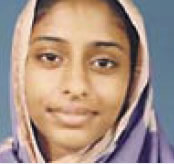 Rafia Saleem didn’t have the advantages that many of us take for granted. With limited formal education, the young Pakistani girl taught herself about the world. Since the age of 12, she has been speaking out and writing about environmental dangers that affect her and other youth in Pakistan.
Rafia Saleem didn’t have the advantages that many of us take for granted. With limited formal education, the young Pakistani girl taught herself about the world. Since the age of 12, she has been speaking out and writing about environmental dangers that affect her and other youth in Pakistan.
Rafia started writing about these dangers for magazines, essay contests, research papers, and poems. She even authored an educational booklet to teach children about the harmful effects of environmental degradation. Through her writing, she is raising awareness about water contamination, air pollution, improper garbage disposal, and deforestation. “Above all,” she says, “lack of awareness has slowly transformed these once minor problems into harrowing menaces.” Rafia hopes that by expressing her concerns for the environment, she will encourage youth to speak out and to take action.
